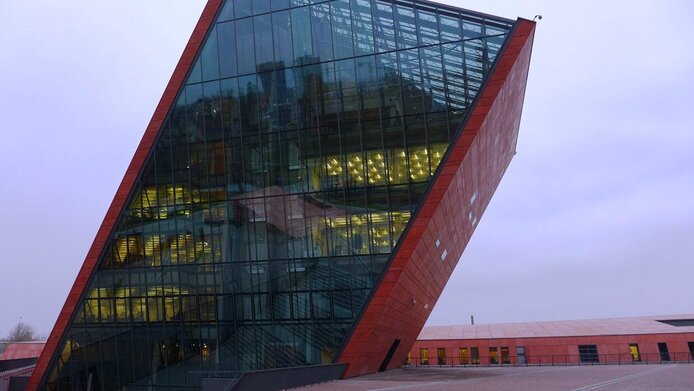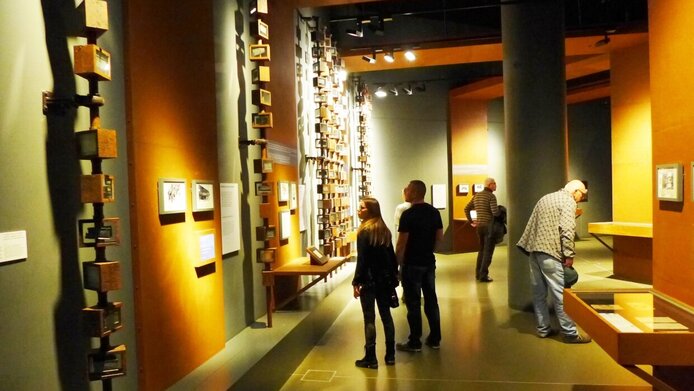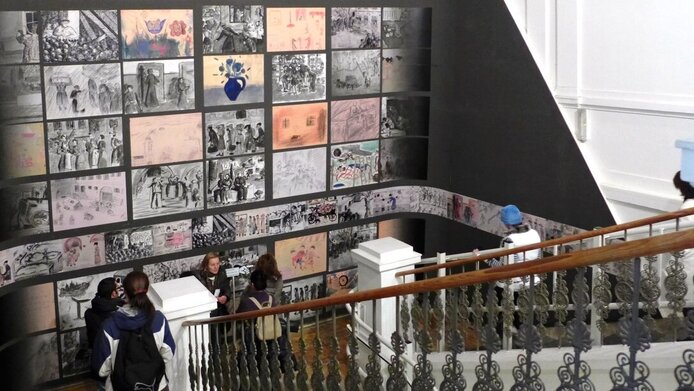Conflict-laden grey areas of memory

The Museum of the Second World War in the Polish city of Gdansk was inaugurated only two years ago. In response to political pressure from the right-wing populist PiS party, the modern museum concept has been revised considerably since last year. The political rationale in a nutshell: too much shame, too little “truth”. The original concept of a multifaceted culture of remembrance, which also included the civilian population's view of the war, was a novel approach. “It addressed gender relations, for instance illicit relationships with forced labourers, as well as Polish co-responsibility. This constituted a break with traditional political history, above all with the heroic narrative of the Poles as brave resistance fighters, which is now to be brought to the fore again,” explains political scientist Ljiljana Radonić from the Institute of Culture Studies and Theatre History at the Austrian Academy of Sciences. The Warsaw Rising Museum, on the other hand, which opened in Warsaw in 2004, is much more pathos-laden. This is one of the ten post-communist memorial museums in nine young EU member states in East-Central and South Eastern Europe that Radonić studied in detail in the context of her FWF-funded Richter fellowship. In her research project, she compared how the memorial museums address the Second World War and also explored why there are no such museums in Romania and Bulgaria. These results now form the basis for a five-year research project on globalised memorial museums funded by the European Research Council.
Assimilation vs. desire for recognition An example from Hungary also illustrates the extent to which political upheavals have an impact on the culture of remembrance. In Budapest, the opening of a new museum, the House of Fates, which gives a great deal of room to Hungarian rescuers of the Jewish population, has been stalled since 2014 due to international resistance. Its concept is regarded by critics as a case of historical revisionism and an antithesis to the Holocaust Documentation Centre, which also addresses Hungarian co-responsibility. The comparative analysis also shows that the political transformation after 1989, and especially efforts to achieve EU membership, had an impact on remembrance of the Second World War in the memorial museums. “Some were oriented strongly to the West and wanted to prove how ‘European’ they were, which I like to refer to as ‘invocation of Europe’. This orientation towards international norms is expressed, for example, in the way in which victims, especially Jews, are portrayed,” explains Ljiljana Radonić. The portrayal style she has in mind focuses on individual fates and uses private photos and short biographies. This applies especially to the Museum of the Slovak National Uprising, the Jasenovac Memorial Museum in Croatia and the Documentation Centre in Hungary mentioned above. At the same time, the three Baltic museums she studied and the House of Terror in Budapest tended to call on Europe to “acknowledge their own individual national suffering under communism”.
Inclusion does not create equality
It is a fallacy to assume that the victims of the Second World War are today largely portrayed in similar ways regardless of religion or nationality. Political scientist Radonić herself was surprised at the extent to which representations diverged, in a few cases even in one and the same place. She cites one example: “In the Museum of Occupations and Freedom Fights in Vilnius, Lithuania, the Lithuanian victims are portrayed in an individualised way. The Jewish victims, on the other hand, are shown only in photographs of anonymous crowds, for instance as deportees aboard a freight train.” Although torture was carried out by both Soviets and National Socialists in the same building, the museum did not address the Nazi era until after 2011. According to Radonić, one reason is “that the number of Jewish victims was much higher, which threatens the collective narrative of Lithuanian victims”. In the case of Roma victims the researcher believes the reason why they are often not portrayed individually, despite adequate archive material, lies in immature perceptions, resentments and the fact that the debate about their inclusion in museum narratives has only started recently.
Neither too much, nor too little
In order to help visitors better understand the suffering caused by one of the most terrible wars in history, many museums are currently trying to convey to visitors a sense of the victims' perspective -- for example, how deportees felt aboard the freight trains. The researcher is sceptical about this trend: “To try and make visitors feel like a deportee is manipulative. Moreover, it is not something you can actually achieve and hence questionable. Huge, humiliating images of victims can also cause disaffection and alienation, which is why arousing emotion is not intrinsically advisable.” Catering to the maxim “less is more”, the concept applied by the Ghetto Museum in Terezín (Theresienstadt, Czech Republic), on the other hand, generates empathy: the displays include a combination of private photos, short biographies, and drawings by prisoners. These findings are a result of Radonić’s analysis of the exhibition guides used at the Theresienstadt Memorial from 1963 up to today. It is her hypothesis that a lack of critical, socio-political discourse about history and memory can even lead to a complete absence of memorial museums, as in Sofia and Bucharest. In this way, the state can continue to claim sole authority for interpreting history; sensitive issues such as civilian victims or co-responsibility are sidelined and therefore largely non-existent in public perception.
Personal details Ljiljana Radonić is a political scientist at the Institute of Culture Studies and Theatre History within the Austrian Academy of Sciences. The FWF-project "The Second World War in Post-Communist Memorial Museums" was initiated by her dissertation on Croatian politics concerning the past with a focus on the Jasenovac Memorial Museum. Last year, Radonić received a Consolidator Grant from the European Research Council (ERC), enabling her to address the globalisation of memory in fifty museums on four continents by 2024.
Publications







